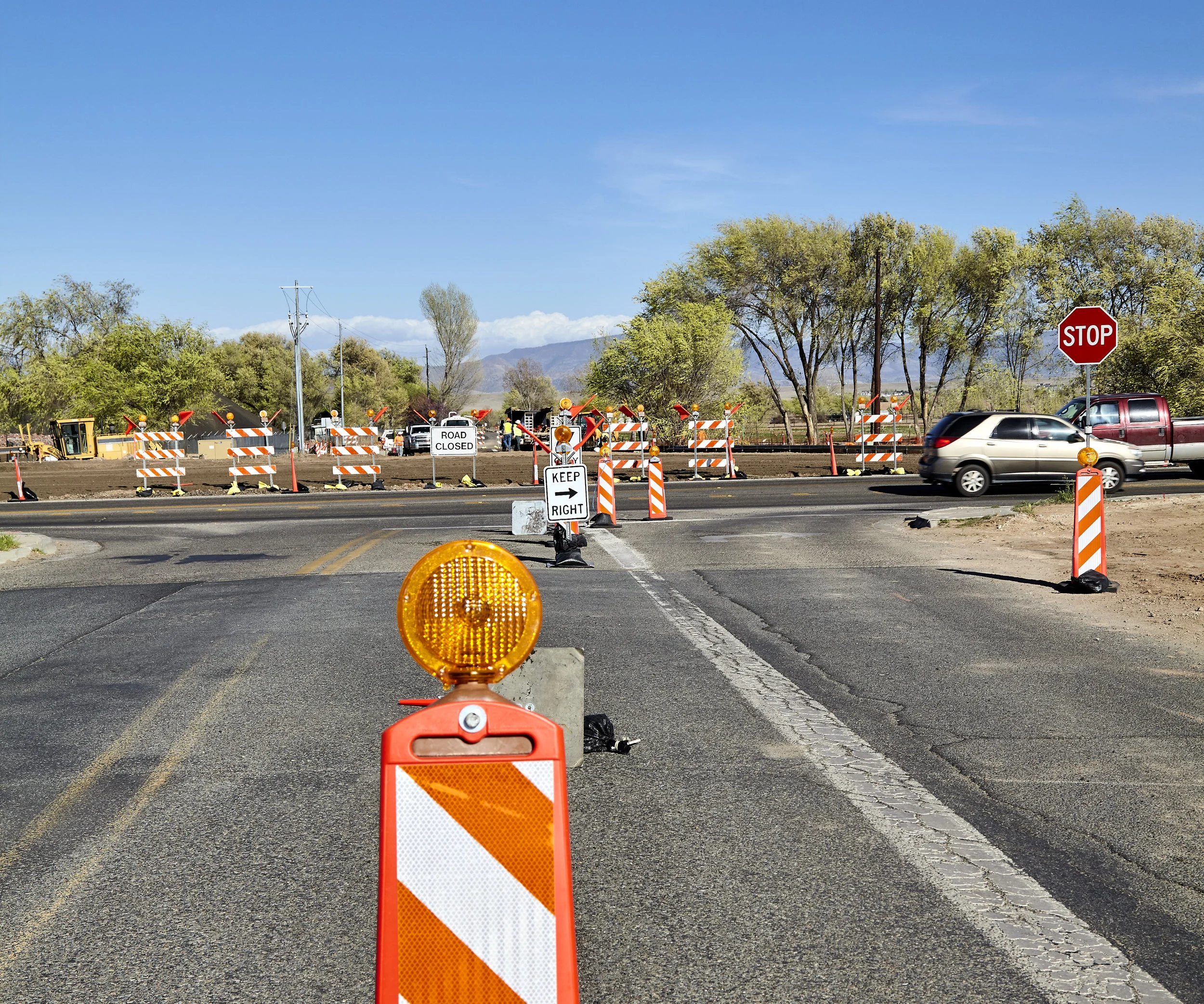Traffic incidents and workers struck by vehicles or equipment account for the highest number of fatal work injuries in America according to the Bureau of Labor Statistics. Emergency responders, clean-up crews, utility workers, and construction workers working in areas where there are moving vehicles and traffic are exposed to being hit by a moving vehicle. Work zones are used to move traffic in an approved direction and are typically identified by signs, cones, barricades, and barriers. Municipal workers and citizens are to be protected by planning work zones (areas where construction and maintenance are being conducted) and using the proper protective and communication devices.
There must be a traffic control plan for the movement of vehicles in areas where there are workers conducting other tasks. Drivers, workers on foot, and pedestrians must be able to see and understand the routes they are to follow. The authority in charge (federal, state, or local) will determine the internal traffic control plan within the construction worksite. When there are several projects, coordinated vehicle routes and communication between contractors will reduce incidents where people are struck by a vehicle.
Standard highway signs for information, speed limits, and advanced warnings for work zones will assist drivers in identifying such directives as “do not enter”, “road/lane closed”, and “reduced speed”. Using standard highway signs for construction or maintenance work sites will assist workers in recognizing the route they are to use at the work site.
Standard traffic control devices, signals, and message boards will instruct drivers to follow a path away from where work is being done. The authority in charge will determine the approved traffic control devices such as cones, barrels, barricades or candlestick posts that will be used as part of the traffic control plan. Use these same types of devices inside the work zone.
Various styles of concrete, water, sand, collapsible barriers, crash cushions, and truck mounted attenuators should be used to limit motorist intrusions into a construction work zone.
Flaggers and others providing temporary traffic control must wear high visibility clothing with a background of fluorescent orange-red or yellow-green and retroreflective material of orange, yellow, white, silver, or yellow-green. In areas of traffic movement, this personal protective equipment (PPE) will make a worker visible for at least 1,000 feet, so the worker can be seen from any direction, and make the worker stand out from the background. Make sure to check labels or packaging to ensure the garments are performance class 2 or 3.
Drivers should be warned in advance with signs that there will be a flagger ahead. Flaggers should use STOP-SLOW paddles with reflectorized panels. The STOP side should be octagonal in shape and be red with white letters, the SLOW side should also be octagonal shaped with orange coloring and black letters.
Flagger stations should be illuminated. Lighting for workers on foot and equipment operators is to be at least 5-foot candles or greater. Where available lighting is not sufficient, flares or chemical lighting should be used. Glare affecting workers and motorists must be controlled or eliminated.
Flaggers should be trained/certified and use the signaling methods required by the authority in charge. Workers on foot, equipment operators, and drivers in internal work zones need to understand routes that construction vehicles will be using. Equipment operators and signal workers need to know the hand signals used for the work site. Operators and workers on foot need to know the visibility limits and “blind spots” for each vehicle on site. Workers need to be made aware of the ways shiftwork and nightwork may affect their performance.
Finally, seatbelts and Rollover Protections Systems must be used on equipment and vehicles in and off the work site.


